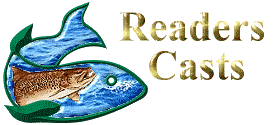CHICKENS, CHUB, AND THE OCCASIONAL BALKAN TROUT
The upper reaches of Bulgaria’s Arda River are said to contain trout. The water here is cooler than other bodies of water I’d fished in the area, and though only the Klen were visually identifiable, a species upon which I shall elaborate later, I knew from a previous year’s visit that there really are trout here because I caught one of them.
Leaving the car I had to do a bit of wading, and a little rock climbing, to get up to where the river finished a plunge through a canyon of boulders. Here was my best bet: well aerated water, with deep pockets among turbulent eddies and drops.
I began fishing the pockets with a nymph and caught a Klen. Otherwise it was slow going in this beautiful stream.
The next hit eventually came in a rowdy pocket while pulling the nymph to the surface in preparation for another cast. The strike was aggressive, the fish fought hard and my hopes surged. Sure enough, the colors of a brown trout flashed up at me as I pulled him close. I had my Balkan Trout, all 10 inches of him.
Now for the photo. The camera was in the back pack. The trout was zipping around in shallow water on a barbless hook. I gave it my best shot, but by the time I got the camera out and ready the trout had managed to throw the hook. The bend in the rod translated into a good deal of upward momentum in the fly. It stuck in a tree, out of reach, and I lost it. No photo, no fly, no fish.
I kept the camera out and ready for the next fish, for a while, but it was soon clear that it was highly vulnerable to a dunking. The camera isn’t waterproof and those rocks were treacherous. I stowed it again. But no matter, I didn’t get any more trout that morning.
This was my annual visit to Bulgaria, where we have now purchased a house in a small village in Rhodope. Rhodope is a mountainous region of Bulgaria extending north from the border with Greece. The area villagers are warm, friendly people living largely in the past. They still mow their fields with scythes, and then pack the hay on their own backs to storage. Large vegetable gardens occupy most village yards, producing potatoes, tomatoes, squash, cucumber, beans and onions in great amounts. All tended by hand.
One family might have a cow, another sheep or a goat. They trade among one another for what they don’t have and pool their various skills to get things done. I imagine that if the world economy were to fail these people would hardly notice but, for spending money, a popular source of income is collecting mushrooms for sale to various distributors. The forests abound with several varieties of mushrooms and they bring a good price.
Into this hard working, close knit community enter I, an American city dweller unfamiliar with hard labor and, to be truthful, not all that keen on it. My wife drives this show. She got a vegetable garden going with the help of her daughter and in-laws. She’s getting the house in order with her Son’s help. She bought some chickens, and she established a wonderful rapport with the neighbors from which I derived great benefit.
The neighbors are incredibly helpful. They taught me how to us a scythe and watched with great amusement my attempts to use it. One very nice lady with a cow regularly brings a pot of fresh squozen (is that the correct term?) milk to my wife, who makes butter and yoghurt from it. Both taste just like store bought products, only maybe they don’t last so long. They lack the chemicals.
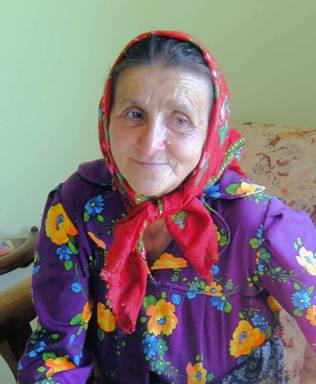
This woman with the cow goes by the name Apka Sofka, Rhodope dialect for Auntie Sofia. Apka Sofka was so darned helpful and brought so much stuff over that I started thinking of her as our local Walmart. She even knitted both of us some woolen slippers! We, in turn, gave her eggs, which seems a pittance of payment for her kindness.
One day shortly after I arrived Ani made some homemade mayonnaise that didn’t turn out too well, so she fed it to the chickens and the darned things stopped producing eggs. Production went from almost ten eggs a day down to one, if we were lucky. In a frustrated mood, I thought of posting a sign in the coop suggesting that an egg a day might keep the axe away. But chickens can’t read, nor do they seem to care.
Fretting now about what we were going to give to Apka Sofka when next she came, it was with great fortune that I discovered how much Rhodopians enjoy eating Klen. Now my fishing would have other than selfish purposes, or so I reasoned to my suspicious wife. I could repay our debt with fish, a mission I was just the perfect fellow to fulfill.
Below our village is a nice little river called the Cherna River. When I arrived this time, and knowing that jet lag was going to destroy me for most of the first week, I took it easy and spent my time on the Cherna, a 4 kilometer drive, fly casting for Klen.
It has taken me quite a while to nail down the proper name for this fish. The apparent common name in Bulgaria is Klen, but the local name seemed to be Kefal. One guy called them Mriana. But a gentleman with an electronic pocket dictionary finally achieved the impossible, the English translation: Chub.
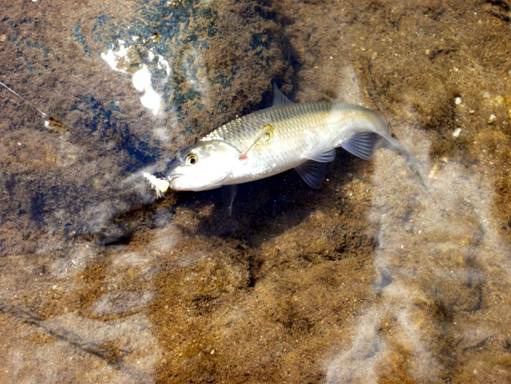
With the appropriate name available to me I’ve had a chance to do a little digging on the fish over the internet and am surprised to find out that in some environments they can reach 5 pounds or more. I’ve never seen one over about 12 inches long in the Bulgarian rivers, but surely there must be some bigger ones there. At any rate, they make a fine substitute for trout, when one can’t find trout, which pretty much defines me in Bulgaria.
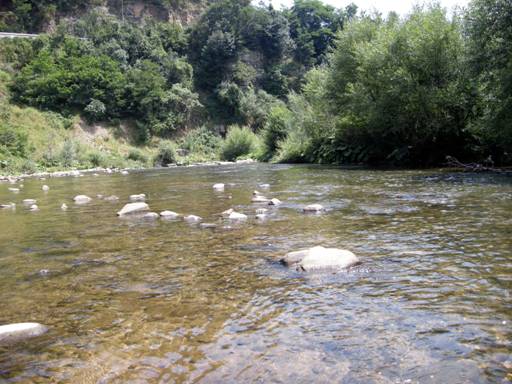
Though the Cherna runs cool and clear and looks very “trouty”, chub are its denizens. Chub and trout may co-mingle, but chub are more able to tolerate warmer temperatures. The Rhodope region of Bulgaria is riddled with small streams and rivers and the chub is the common feature in all of them. They are fun to catch.
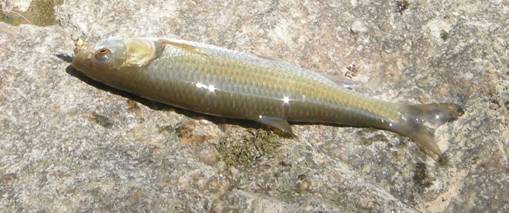
Chub forage in virtually all swimmable areas of the stream. They seem to prefer hanging close to the bottom, where they pick critters off the rocks, but they exhibit consistent readiness to ambush any floater coming by in the current.
In the Cherna, the water practically sparkled with the flashes of the fish as they wrenched things away from the stones. I was amazed at how many there were, but still I was having trouble getting bites. I tried nymphs and dry flies with only marginal success.
Gradually I began to figure them out, to a certain extent, and my success rate improved. This was much to Apka Sofka’s delight.
Chub are very wary fish, especially so in the shallows. And I mean shallow. They congregate in large numbers in water only an inch or two deep at the edges of the stream. I could see them ahead of me as I waded along, always moving to deeper water lickity split.
Long casts with long leaders were the ticket here. I’d manage to get one, two if I was lucky, before the others spooked and I had to move up a bit, with an exception. There was one hole in which I took one fish after fish, provided I fished up the correct side. This hole was deep, swift and rowdy in the middle, but only about 20 feet wide. On one side a small volume of water diverted across a shallow bar into a side rivulet. That bar was full of fish and by fishing across the rowdy water to the bar, from the other side; I was able to get them without spooking them much. I did very well there.
The most takes were on flies delivered with a kind of plop, such as a terrestrial might make after an errant trajectory placed him in the water. A fly that floats well seems to be particularly appealing, so my little foam grasshoppers were well received.
On the other hand, a little black ant that I had in my box did even better, and it didn’t float well at all. So, go figure.
I found that chub seem to like a little animation in the fly. Not current drag, but the kind of kicking a terrestrial might do during its panic. This can get a very aggressive strike in motion.
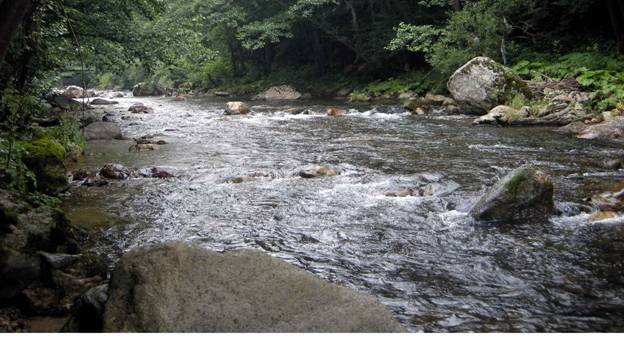
So casting to chub occupied a lot of my time this trip, but eventually I did make it over to the Arda River, at which point we began this article. I went back one more time a couple of days later and got two more Balkan Trout, both taking a foam hopper in rowdy water. I love those foam hoppers!
As for photos of Balkan Trout, with great apologies, I got none. I really didn’t want to hurt them because they are so endangered there, and the barbless hook wouldn’t hold them long. Perhaps next year will be more fruitful. There are other places to catch trout in Bulgaria, some not too far from our village, I’m told. But then, they tell me a lot, those rascally Bulgarians.
